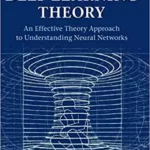
How is AI Being Used to Change Higher Education? Medical, financial, energy, and commerce industries are being revolutionized rapidly by artificial intelligence (AI). The use of AI technologies in Higher Education is particularly promising. In the coming years, artificial intelligence could have a huge impact on higher education. A new generation of innovations, such as virtual reality and other innovations, may be able to improve learning as well as lower costs for Generation Z and beyond.
We will discuss in depth in this article how artificial intelligence can be used to make higher education a better experience for students and teachers alike.
Also Read: How Technology Has Changed Teaching and Learning.
How Algorithms Fit Into Enrollment Management
It is clear why American universities are reliant on algorithms for selection models to manage enrollment by understanding the status of higher education as a whole. As a result, college admissions and financial assistance offices, as well as enrollment management algorithms, need to be analyzed. Financial objectives weigh heavily on university admissions and financial aid offices. They are the only offices with the responsibility of admitting and graduating enough students to keep the college afloat.
There are only a few elite universities that have endowments or other sources of revenue to fund college functions. The vast majority rely solely on tuition to fund college functions. As a result, scholarship offices are under pressure to produce enough students to cover institutional expenses without giving out too much money, usually while juggling other goals such as attracting a diverse and competent student population. For this purpose, admissions offices use AI-assisted algorithms and predictive yield models. These predictive models help higher educational institutions manage and balance the financials without compromising on the quality of services provided.
Personalized admissions process
In the future, universities and colleges will be able to create personalized experiences for students by automating various administrative processes throughout the admissions process, such as visa processes, student financial choices, housing options, and course registration. This would mean every student gets a unique admissions process tailored to their needs and conditions,
Recruiting Practices Will Change
College recruiting staff will be able to target their efforts more effectively by developing algorithms that allow them to determine which candidates are most likely to be accepted and enrolled. It is also possible to use these algorithms to identify students who will succeed, graduate and become active alumni.
Optimizing For Financial, Demographic, And Scholastic Outcomes
To persuade more students to enroll in higher education, educational institutions are acquiring algorithms that distribute scholarships strategically. Therefore, these enrollment management algorithms allow universities to tailor the cost of attendance to a student’s willingness to spend, an essential aspect of the higher education market.
As well as being beneficial to schools in terms of institutional planning and financial security, these algorithms also assist them in meeting their desired scholastic, demographic, and financial goals in the future.
According to an Educause survey, over 75% of universities and colleges use analytics for enrollment management, making it the most popular analytics type in higher education.
Also Read: China is using AI in classrooms.
Subscription-based Teaching Model
The higher education sector is likely to follow the trend of shifting to a subscription-based model in the near future as well. There is a growing need to give students more ways to learn and more options to do so, so higher education institutions are beginning to innovate, finding ways to unbundle degrees and offer non-linear, flexible career paths and education opportunities.
This would transform the way in which students pay for their higher education. They might, for instance, instead of enrolling, subscribe to college; for a monthly fee, they could take whatever courses they want, when they want, and have access to long-term career guidance and advice.
Students who pay by the month are more likely to graduate from their studies since they will be able to move through their education faster. Due to the flexibility that a student receives when using a subscription model, decision algorithms can help define this model.
The Changing Role of Teachers in an AI-Saturated World
Robot Teachers
People are most likely to be replaced by machines when they perform repetitive and routine tasks. In higher education, teaching assistants are at the greatest risk of being replaced since they frequently deal with routine concerns such as grading, deadlines, and so on.
Research from a few higher education institutions supports this prediction. Virtual teaching assistants have been used by Georgia Institute of Technology professors for a few years, and both staff and students are happy with the results.
In recent years, massive open online courses (MOOCs) have become more and more popular. Although, some of these courses attract a large number of students, and managing the enormous number of students can be challenging at times. The use of artificial intelligence can make this task easier. In some publishing houses, such as Pearson, AI-based grading assistants are being developed, although not all college professors agree that AI in this way should be used.
Source: YouTube
Administrative processes
It is clear that artificial intelligence has a lot of promise in terms of automating administrative processes and helping educational institutions and professors do their jobs easier.
In addition to controlling the classroom environment, professors and teachers have always been required to handle a variety of administrative and organizational duties.
Artificial intelligence could be better utilized to personalize the educational experience for each student. Each day, AI may adjust classes according to the level of student participation in the class. In order for an instructor to be conscientious, he or she would keep track of each student’s progress so as to identify those who may be experiencing academic or social difficulties. All of the Artificial Intelligence units in each of a student’s classrooms can be linked together to generate a holistic assessment of which students need extra help.
There is a possibility that the AI unit will be able to combine and analyze data from a variety of sources in order to identify student issues before they become obvious to the instructor.
Virtual Reality for Education
It is possible to improve education through the use of virtual reality by motivating students to engage in engaging and memorable experiences that they would not otherwise have in a normal classroom setting. Additionally, the entire process can take place within the classroom. Through virtual experiences, students can be engaged, inspired, and taught in a unique and memorable way.
At some point in the near future, we would not be surprised if Virtual Reality made its way onto the syllabus, given the popularity of VR in education and the positive reception it has received. Currently, curriculum-aligned content and structured VR teaching materials have already been established at Northeastern University and can be accessed.
It is well known that virtual reality classrooms, also known as immersive classrooms, are one of the most popular and effective methods to utilize VR in education.
An immersive classroom is a learning environment in which pictures are projected onto the room’s walls to create an immersive environment. Within the classroom, this generates a virtual atmosphere.
“Transporting” students to another location can be done from within the classroom. Students can share the experience together without VR headsets, and they are encouraged to communicate with one another.
In contrast to virtual reality headsets, which some students may find difficult to use, immersive classrooms are suitable for all types of learners. Using virtual reality content in a familiar setting allows the students to interact with the content better.
Virtual Teaching Assistants
With the help of artificial intelligence, a virtual teaching assistant can improve a student’s learning experience. For instance, there are many courses offered online that require students to learn something on their own. The result is less than ideal when the amount of time spent on self-learning exceeds the amount of time spent on instruction.
It’s hard to overlook the benefits of high-quality AI-powered teaching solutions when it comes to the educational process. There can be no doubt that AI assistants are the next step towards effective education personalization, improving the online learning experiences of students and reducing the workload of faculty members.
To keep things running smoothly, virtual teaching assistants can keep an eye on discussion threads and emails for questions from students as well as address small technical issues. In addition, they can provide answers to students questions and bring student problems to the instructor’s attention if necessary.
The virtual teaching assistant collects unanswered questions from a number of sources, including threads, discussion boards, newsgroups, emails, and phone calls, and responds by way of a message board. On the virtual learning systems that they use, they can also monitor discussion boards and forums.
Automated Transcripts
Every semester, hundreds of transcripts need to be reviewed, which puts significant pressure on Admissions, not just in terms of processing transcripts, but also in terms of meeting deadlines without making any mistakes.
There is a greater possibility of human error when there is an influx of transcript applications to process on schedule. As each transcript is unique, processing times can increase, especially with human efforts, which may take weeks or longer, delaying the entire process.
Thanks to out-of-the-box, complex Image Recognition Algorithms, Artificial Intelligence software can be used to read, recognize, and extract courses, programs, credits, and GPA-related statistics from transcripts. A system of automatic transcripts is used by Southern New Hampshire University to streamline the college application process.
Connected Transcripts
Connected transcripts can be stored in a common database that everyone can access and do what they need to do. Right now, they are limited to higher education institutions rather than being a centralized service. Once they are part of the centralized service, every application students make for work, further studies, transcripts can automatically get attached to the applications wherever needed. This will reduce a lot of overhead and costs at the institutional level.
Also Read: The Role of Artificial Intelligence in Education
AI Applications
Three Artificial Intelligence applications are particularly important for teaching in higher education – Institutional, Student Support, and Instructional.
How is AI Being Used to Change Higher Education? Institutional
Schools, especially in higher education, increasingly rely on algorithms for tasks like appealing to prospective students, predicting class size, developing curriculum, and allocating resources like financial aid and facilities.
How is AI Being Used to Change Higher Education? Student Support
In many schools, machine learning is used for the purpose of coaching. There are programs that allow students to schedule their course load according to their needs automatically. Some of them make recommendations for courses, majors, and career options, in a similar manner to guidance counselors or career service offices of the past.
Based upon the previous performance of students with similar data profiles, these technologies produce recommendations based on the previous performance of similar students. A student who is having difficulty with chemistry, for example, may be advised not to pursue a pre-medical degree using these tools or a visual artist might be offered data visualization based on the data.
AI is also able to help students in the field of financial assistance. If students need money to finish the semester and avoid dropping out, universities can use the information about the students to provide them with last-minute micro loans. In higher education, institutions of higher learning can use information regarding students in order to provide them with last-minute micro loans in order to help them finish the semester and avoid dropping out.
Additionally, one of the most common applications of predictive analytics in student assistance is the use of early warning systems, which analyze a wide range of data – both academic and non-academic – to identify students at risk of failing or dropping out, or who are experiencing mental health problems. One of the real benefits of artificial intelligence is that it allows educators to have a holistic perspective on students’ situations, which is something that big data can provide.
How is AI Being Used to Change Higher Education? Instructional
Lastly, artificial intelligence can be used in the classroom to instruct students at educational institutions. To achieve this, systems have to be developed that can adapt to the speed and progress of each individual user. Education software identifies a student’s progress in a course, and suggests or distributes certain parts of the course for a student to study, as well as additional resources for reference, either manually or automatically.
According to the National Center For Education Statistics, the use of platforms for “personalized learning” is quite common. Users will be able to customize multiple courses or receive feedback based on the specific error that they make without any assistance from the system.
Chatbots
Universities should implement chatbots and virtual agents that help students improve their mental health in order to minimize stress and boost their motivation to study. Woebot is a chatbot powered by artificial intelligence that shows users their emotions through “intelligent mood tracking.”
In an age when many public university health systems are overburdened, and where students face dangerously long waiting periods for on-campus mental health therapy, chatbots could provide quick assistance to students. The introduction of a chatbot of this kind comes with its own set of risks of course. In order to maintain students’ privacy, universities would need to take extreme precautions to safeguard their personal information, and some level of human supervision would be needed in order to supervise the advice that chatbots provide.
Promise and Perils
In terms of AI applications, part of the promise lies in their effectiveness, and part lies in their efficiency. It is only possible for humans to acquire a limited amount of data at a high granularity level. In contrast, AI systems are capable of recording a much greater amount of data at a higher level of detail, and thus can record a much greater amount of data. Additionally, these systems are capable of doing so in real-time. It is also possible for them to examine a large number of students, whether they are in a classroom, a student body, or a database of aspiring students.
In addition, Artificial Intelligence systems provide outstanding observations as well as conclusions in a timely and cost-effective manner. By taking advantage of these efficiencies, we believe an enhanced level of efficiency will be attained.
However, artificial intelligence in higher education also has its negative aspects. An independent study by a group of students at the University of Warick reveals that colleges are at the forefront of disruptive technological changes, such as artificial intelligence and automation. There is also a responsibility on the part of universities to consider their broader social role and to develop opportunities to help society adapt to this disruption.
Colleges can help provide skills and chances for those who have lost their jobs as a result of technological unemployment, and we must experience the repercussions of technological unemployment.
There is no doubt that the fourth industrial revolution is having an impact on all aspects of our modern society and economy in a significant way. Contrary to past revolutions, which had little effect on university structure and organization, AI’s mix of technologies will disrupt those institutions from the inside out. It is clear that the concept of deep learning, vital to the growth of artificial intelligence, impacts the mission of academic institutions, and may create new opportunities for them to compete with each other.
Also Read: Future of Hospitality with Artificial Intelligence.
Student Retention Efforts Will Be More Proactive Than Reactive
Professionals who specialize in student success can build retention programs that anticipate, rather than react to, students’ challenges by identifying early warning signs, red flags, and students who are likely to fail academically. An AI-based system can provide the educational team with invaluable data on student behavior and help the team to anticipate enquires and problems in advance.
Division of Labor
Changing the role of humans in the production process as well as their relationship with their employers will have an impact on the way they interact with consumers and employees, if division of labor is split along the lines of knowledge creation and knowledge application, with people being responsible for the first and digital agents for the latter.
It is not sufficient to know the advantages of using a new technology or to even understand how to use it in order to make use of it effectively. There is also a question of social acceptance and emotional acceptance. In order for the fundamental technology to have a disruptive impact on work habits and social standards, both typewriters and smartphones had to undergo changes before technology had a significant impact.
Currently, the AI-Supported Mentoring Program, another potentially disruptive technology, is currently in the same situation. There is no question that artificial intelligence-based technologies are rapidly gaining traction in the educational sector at large. However, from a practical perspective, it can be argued that these technologies are mainly being utilized in an inefficient manner -to automate tasks traditionally performed by humans, who are then considered redundant and discarded.
In the last few years, there has been a growing body of evidence suggesting that solutions created by humans and machines collaboratively are better than those developed by humans and machines individually.
How is AI Being Used to Change Higher Education? The Black Box
It is very difficult to figure out what is going on inside AI systems since they are interacting with so many parameters on a complex level. Using computers to perform tasks that humans are not capable of performing is the goal. Due to this, trying to unravel it leads to incredibly simplistic explanations of what is happening.
As a result, we become dependent on speed as a consequence of computational decision-making, also known as algocracy. Algocracy provides continuous, real-time data based on real-time analysis, bridging the ‘gap between data and knowledge. Software allows anyone to perform the analysis, even without any prior experience, analytical skills, or technological skills.
As a prophetic tool that can also see the future, the ‘black box’ opens up many possibilities for the future. This results in algorithmic decision-making systems generating and enabling smart and responsive outcomes.
The use of student data with machine learning is driven by the desire to decrease expenses and boost efficiency as well as increase competitiveness and productivity.
Strategic Or Institutional Applications Of AI: Learning Analytics
How is AI Being Used to Change Higher Education? Analyzing student and classroom experiences for the purpose of assisting learning at different levels is the goal of learning analytics. Learning analytics is a relatively new field, but it has evolved significantly in the past few years, especially in its applications in higher education.
Learning analytics can be beneficial for both students and educators, and can also benefit institutions in the long-run. The massive amount of student data collected over the years, including demographic information, grades, and actions, enables schools to tailor retention tactics and academic performance, moving away from average leveling and toward meeting the needs of each student in a personalized and data-driven manner.
There are a lot of educational difficulties that exist in a higher education setting that include all stakeholders in learning and teaching activities. School dropouts, the difficulties of student cooperation, the growth of scientific reasoning and writing, as well as the growth of computational thinking can all be addressed with the use of learning analytics.
There are several ways to help teachers understand student behavior with critical thinking and classroom differences, as well as keep track of students’ motivation levels. Management and decision-makers can use learning analytics to identify students who are at risk of not graduating on time and to create programs that fit the needs and expectations of students.
AI Ethics in Higher Education
It is generally believed that machine learning algorithms are the best at predicting what they have seen the most in the past. In this way, they will be able to make more accurate predictions of the groups of students who will earn the most common grade, using grade prediction. In the event that the grade is high, it will perpetuate injustice, since the algorithms designed to benefit them will not be able to help the children who score lower. In a recent study, which evaluated millions of course grade projections at the public university, it was found that this was the case. It was found that allowing the predictive model to focus on all grades equally resulted in higher results for equal performance across the groups, but these results came at the cost of overall accuracy.
There is no question that it is important to address race and bias in prediction models, but doing so without caution can lead to a worsening of inequalities. Adding race as a parameter to a model without making any other changes resulted in the least equal performance across groups, therefore lead to the least fair results in the same research.
A team of researchers discovered that by using a technique known as adversarial learning, which teaches the model not to detect race and adds a machine learning penalty when the model correctly detects race based on a student’s input data, they were able to achieve the most equitable results.
Additionally, the researchers also attempted to train different models for each group in order to improve accuracy. However, they found that data from all students improved the prediction for all groups significantly, as opposed to only using the data from one group.
The findings of this study illustrate the difficulties in developing artificial intelligence (AI) infused solutions that support an institution’s student success initiatives rather than hinder them. In order to effectively address bias and promote ethical implications in the many educational contexts, additional research is required to create additional best practices.
Improving reputation of higher education
By discovering and targeting the applicants who are best suited for a school, and tailoring student experiences across the student lifecycle, universities will be able to operate more efficiently, enroll students who are more likely to graduate, and provide a higher quality of education.
AI, on the whole, appears to offer mainly time-saving benefits. By leveraging AI, administrators at their schools can perform time-intensive jobs and solve problems faster by leveraging AI to perform time-intensive jobs and refocus their attention on improving students’ engagement. As engagement of students grows so will their grades, research and ultimately lead to improving reputation of the institution.
Also Read: 7 Trends of AR/VR for 2022
Conclusion: How is AI Being Used to Change Higher Education?
How is AI Being Used to Change Higher Education? Higher education, no matter how big or small, has the potential to be transformed by artificial intelligence (AI). In the education sector, it can be used to anticipate enrollment trends, enhance recruitment efforts, and improve the academic performance of students when used to improve student outcomes.











